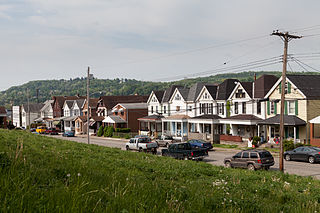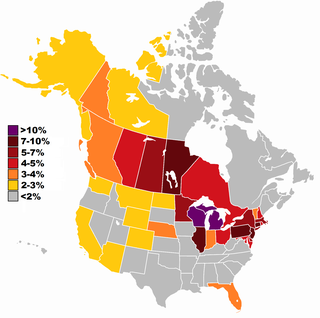
The All-America Football Conference (AAFC) was a professional American football league that challenged the established National Football League (NFL) from 1946 to 1949. One of the NFL's most formidable challengers, the AAFC attracted many of the nation's best players, and introduced many lasting innovations to the game. However, the AAFC was ultimately unable to sustain itself in competition with the NFL. After its folding, three of its teams were admitted to the NFL: the San Francisco 49ers, the Cleveland Browns and the original Baltimore Colts.
The Akron Pros were a professional football team that played in Akron, Ohio, from 1908 to 1926. The team originated in 1908 as a semi-pro team named the Akron Indians, but later became Akron Pros in 1920 as the team set out to become a charter member of the American Professional Football Association. Fritz Pollard, the first black head coach in the NFL, co-coached the Akron Pros in 1921. Paul Robeson played for the team in 1921 as well. He was among the earliest stars of professional football, before football became segregated from 1934 to 1946. In 1926, the name was changed back to the Akron Indians, after the earlier semi-pro team. Due to financial problems, the team suspended operations in 1927 and surrendered its franchise the following year.
The Cleveland Tigers were the first Cleveland team franchise in what became the National Football League (NFL). The Tigers played in the "Ohio League" before joining the American Professional Football Association during the 1920 and 1921 seasons.
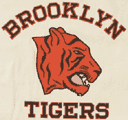
The Brooklyn Dodgers were an American football team that played in the National Football League from 1930 to 1943, and in 1944 as the Brooklyn Tigers. The team played its home games at Ebbets Field of the baseball National League's team, the Brooklyn Dodgers. In 1945, because of financial difficulties and the increasing scarcity of major league-level players because of the war-time defense requirements at the height of World War II, the team was merged with the Boston Yanks and were known as the Yanks for that season.
Robert William Weiss is an American professional basketball coach and former professional basketball player and coach.

Joseph Robert Kapp is an American former football player, coach, and executive. He played college football as a quarterback at the University of California, Berkeley. Kapp played professionally in the Canadian Football League (CFL) with the Calgary Stampeders and the BC Lions and then in the National Football League (NFL) with the Minnesota Vikings and the Boston Patriots. Kapp returned to his alma mater to serve as head coach of the California Golden Bears from 1982 to 1986. He was the general manager and president of the BC Lions in 1990.
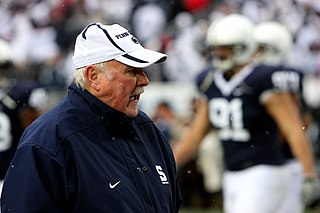
Galen Samuel Hall is a retired American college and professional football coach and player. He is a native of Pennsylvania, and an alumnus of Penn State University, where he played college football. Hall was previously the offensive coordinator at the University of Oklahoma and the University of Florida, and the head coach of the University of Florida, the Orlando Thunder, the Rhein Fire, and the XFL's Orlando Rage. He most recently served as the offensive coordinator at his alma mater, Penn State.

Samuel Arthur Weiss was a Democratic member of the U.S. House of Representatives from Pennsylvania.
The Penn State Nittany Lions team represents the Pennsylvania State University in college football. The Nittany Lions compete in the NCAA Division I Football Bowl Subdivision as a member of the Big Ten Conference, which they joined in 1993 after playing as an Independent from 1892 to 1992.
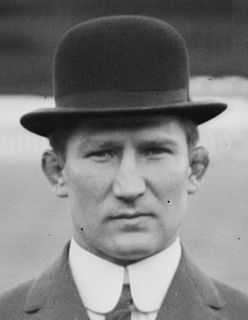
Robert Cook Folwell Jr. was an American football player and coach. He served as the head coach at Lafayette College (1909–1911), Washington & Jefferson College (1912–1915), the University of Pennsylvania (1916–1919), and the United States Naval Academy (1920–1924), compiling a career college football record of 106–29–9. Folwell then moved to the professional ranks, coaching the New York Giants of the National Football League (NFL) in 1925, the Philadelphia Quakers of the American Football League in 1926, and the Atlantic City Roses of the Eastern League of Professional Football in 1927.
Francis Arthur "Mother" Dunn, was an American football player as well as head football coach for at Dickinson College in Carlisle, Pennsylvania. While coaching at Dickinson he also played professional football for the Canton Bulldogs. After coaching he served as a corporate attorney in the steel industry until he retired in 1969

Walter Raleigh Okeson was the coach of and played for the first all-professional football team, the 1897 Latrobe Athletic Association club. A few years later he became the eighth head football coach for the Lehigh Mountain Hawks in Bethlehem, Pennsylvania, a position he held for the 1900 season. His overall coaching record at Lehigh was 5 wins, 6 losses, and 0 ties. This ranks him 17th at Lehigh in total wins and 15th at Lehigh in winning percentage.

Arthur St. Leger "Texas" Mosse was an American football player and coach and the 9th head football coach of the Pittsburgh Panthers and the 13th head football coach for the University of Kansas Jayhawks. While at Pittsburgh, he coached the university to its first undefeated season (10-0) in 1904. Mosse also played professional football for the Homestead Library & Athletic Club in 1901.
The Latrobe Athletic Association was a professional football team located in Latrobe, Pennsylvania, from 1895 until 1909. A member of the unofficial Western Pennsylvania Professional Football Circuit, the team is best known for being the first football club to play a full season while composed entirely of professional players. In 1895, team's quarterback, John Brallier, also became the first football player to openly turn professional, by accepting $10 and expenses to play for Latrobe against the Jeannette Athletic Club.
The Greensburg Athletic Association was an early organized football team, based in Greensburg, Pennsylvania, that played in the unofficial Western Pennsylvania Professional Football Circuit from 1890 until 1900. At times referred to as the Greensburg Athletic Club, the team began as an amateur football club in 1890 and was composed primarily of locals before several professional players were added for the 1895 season. In 1894 it was discovered that the team had secretly paid formerly Indiana Normal player, Lawson Fiscus, to play football and retained his services on salary. The team was the chief rival of another early professional football team, the Latrobe Athletic Association.
The Watertown Red & Black is a semi-professional American football team based in Watertown, New York. Founded in 1896, the team is the oldest semi-pro football team in the United States. Because of this, the team has the most wins (565), losses (268), ties (43) and games played (876) of any semi-professional team; their overall win percentage is .670.
Arthur Slaymaker Herman was an American football and baseball player and coach. He played college football and baseball for Franklin & Marshall College from 1913 to 1916. He also played two years of professional baseball as a second baseman for the Hanover Hornets and the Gettysburg Ponies of the Blue Ridge League. In 1969, he became one of the inaugural inductees into the Franklin & Marshall College Athletics Hall of Fame.
The Western Pennsylvania Professional Football Circuit was a loose association of American football clubs that operated from 1890 to approximately 1940. Originally amateur, professionalism was introduced to the circuit in 1892; cost pressures pushed the circuit to semi-professional status from about 1920 through the rest of its existence. Existing in some form for 48 years, it was one of the longest-lived paying football loops to operate outside the auspices of the National Football League.

